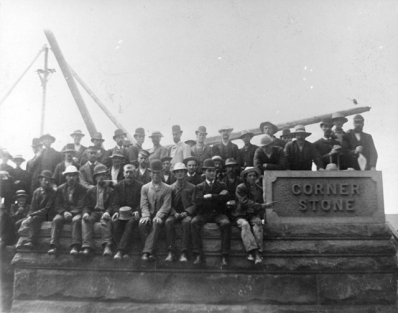The accessibility door at Waterdown Branch is not working. We aim to fix it quickly.
The Mountview stop at 5:30pm-6:30pm is temporarily changed to 4:45pm-5:30pm
All branches close early on Tuesday, December 30 at 6:00 PM (*with the exception of Carlisle, Freelton, Greensville, and Mount Hope) for holiday-adjusted hours. This includes branches with Extended Access.
*Carlisle- 10am - 3pm
Freelton- 9am - 2pm
Greensville- 9am - 2pm
Mount Hope- 10am - 3pm
The Makerspace at Central Library is currently out of white vinyl for printing. Members needing white vinyl can visit the Dundas or Valley Park branch Makerspaces, which are the closest locations with white vinyl currently available.
Due to maintenance, the Barton Branch will be closed on Wednesday, January, 7. Please visit Central Library or Kenilworth Branch for your library needs. www.hpl.ca/hours
Printing, photocopying and scanning are working at Westdale Branch. We're working to get these working again as soon as possible.
Daily print balances for black and white and colour printing change January 2, 2026. The new daily print balance is 40 cents. Members receive four free black and white copies or two free colour copies.
Large format and vinyl printing pricing also change on January 2. Visit https://www.hpl.ca/makerspaces for updates.
Bookmobile is off the road December 31, and January 1st. Visit www.hpl.ca/bookmobile for our Holiday Schedule.
Due to the setup for the Noon Hour Concert, the Fourth Floor at Central Library will be closed on Friday, January 2. Makerspace and Newcomer Learning Centre will remain open. Floors 1-3 have spaces to work and study.
All HPL Branches close early on Wednesday, December 31 at 1pm. This includes branches with Extended Access.
All branches close on Thursday January 1 for New Years Day. This includes branches with Extended Access.
Branch Study Halls are paused Friday, December 19, 2025 through Monday, January 5, 2026. Central Library Study Hall hours resume Spring 2026.
www.hpl.ca/study-halls
Bring back your borrowed library items (due Oct 1 or later) within 28 days to avoid a replacement or lost fee. We'll remove the fee when you bring back your overdue items.
History of City Hall

Upon the completion of the demolition, the question of the cornerstone-laying, an important occasion for speech-making and politicking, was raised. Invitations were confined to the more important civic officials and citizens who occupied or had occupied positions of public trust and responsibility (35). After a delay, the cornerstone was finally laid on July 19, 1888. The Spectator reported that "[i]n front of the scene of the ceremony, on James Street, a great crowd had gathered, leaving room for only the street cars to pass. Every window commanding a view of the scene was crowded. A lot of boys had climbed on top of Peanut Charley's stand near by, and just before the ceremony commenced the frail roof crashed under them, and the boys went down head first into the peanuts, fruit and candies. Charley was inconsolable" (36). When the city council convened on September 24, 1888 the petition "asking that the Peanut Stand...be allowed to remain in front of the New City Hall" was denied (37).
The contents of the cornerstone included a scroll, the financial statement for 1887, the voters' list for 1888, a city directory for 1888, Canadian silver & copper coins, the county directory for 1888, the Canadian almanac for 1888, copies of the Canada Gazette, the Ontario Gazette, the Dominion Illustrated, the Spectator and the Times, minutes of the Board of Education for 1887, a copy of the invitation list, photographs of the old and new city halls, City Messenger Charley Smith's photograph, and Mr. Neill's group photograph of the city hall officials. At the last minute a bill-of-fare of the lunch was thrust into the box " (37). When the cornerstone was moved in the next century to the new city hall, everything remained intact. However, the coins placed in the box were missing (38). After the cornerstone block was lowered the speeches began. Mayor Doran spoke, followed by Alexander McKay, M.P., Adam Brown, M.P., John M. Gibson, M.P.P., Warden Flatt, Alderman Moore, Sheriff McKellar and Alderman Stevenson. "By this time the crowd had thinned considerably, and though the list of speakers was not half exhausted, it was thought wise to stop the speaking right there" (37). They moved into the new city hall in January of 1890.












